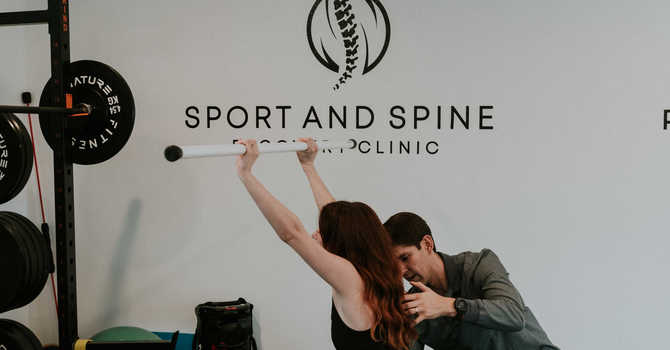Bottom Line:
Life is motion.
“Motion is lotion” for your body.
You get the idea.
The point is that moving every day is crucially important to your overall health and wellness, and stretching (and knowing how to stretch properly) is just as important to making sure you’re moving well.
The truth is, stretching is an often overlooked element of self care.
That’s a big part of why we offer stretch therapy in [your city / town / neighborhood].
Many of us think the need to stretch applies only to athletes or that we need to commit to yoga for stretching to help us at all.
That’s simply not true.
Consider this.
When you wake up in the morning or stir from a nap, what’s the first thing you tend to do?
Stretch!
It’s almost as if your body is trying to tell you something, isn’t it?
Incorporating stretches and exercises that focus on flexibility into your daily routine, whatever it may be, can help your body maintain the ability to move through its full range of motion without pain.
The benefits are real.
For example, improving the mobility of your mid-back (thoracic spine) can go a long way towards reducing your low back pain, improving your posture, and even decreasing your likelihood of experiencing shoulder issues.
All that said, there are right and wrong ways to stretch.
Knowing the differences and understanding how to stretch with proper technique will help you stay more energized throughout the day and can also improve the flexibility of your joints.
Read on.
Why it Matters:
There are two main types of stretches: static and dynamic.
Static stretching involves stretching different parts of the body to the point of tension (not pain).
When “cold” muscles are stretched in this manner, the stretch itself may actually contribute to muscle tightness, so it’s best to perform these stretches with warm muscles.
Unlike static stretching which involves moving a joint to a point of slight discomfort and holding it for a length of time, dynamic stretching is based on movement and can be used to warm up muscles.
Dynamic stretching is about moving your body through your common ranges of motion with the goal of increasing your range of motion with each repetition of the stretch.
Pilates exercises for example involve a lot of dynamic stretching.
When done routinely, dynamic stretching can help release muscle tension, increase energy levels, and improve the delivery of nutrients to your muscles.
If you need help getting started with stretch therapy in Sun Prairie, be sure to give our team a call (yes, we do that too!).
While you can stretch anytime, anywhere, knowing how to stretch with proper technique is key.
Stretching incorrectly can do more harm than good.
First and foremost, never stretch to the point of pain.
Remember that your primary goal is also to achieve and maintain equal flexibility from side to side - not to outright achieve the flexibility of a gymnast.
That said, concentrate your stretches on major muscle groups like your hips, low back, and neck and shoulders, and supplement with stretching any other joints and muscles that you routinely use each day.
That may sound like a lot at first glance but stretching is truly for anyone and can be worked into every routine.
To bring it all full circle, let’s review a few of the top benefits of stretching.
Improved flexibility. Stretching helps keep your muscles and joints limber.
Increased energy. Stretching can help improve overall circulation and nutrient delivery which can help you feel more energized.
Better posture. Consistent stretching can help improve alignment and posture over time.
Next Steps:
Remember, it’s best to save the static stretching sessions for the end of workouts or after you’ve enjoyed any of your favorite physical activities.
Otherwise, we recommend incorporating dynamic stretching into your routine approximately 2-3 days a week.
No matter how many articles you read about how to stretch, there’s one common theme you’ll notice…
Repeat, repeat, repeat!
Skipping regular stretching means that you risk losing the potential benefits, and even 5 to 10 minutes of stretching at a time can be helpful.
What’s more, stretching regularly can also help boost the results of your chiropractic adjustments.
If you already run 2-3 days a week, you can perform dynamic stretches that include walking lunges and knee lifts before you start your run.
Alternatively, you could use that time to perform your favorite yoga or Pilates inspired dynamic stretches.
We like to recommend the “cat-cow” yoga position for our patients regularly dealing with low back pain.
To do this exercise, move to the floor and prop yourself up on your hands and knees with a neutral spine.
Next, arch your back and push your stomach towards the ground and tilt your chin up high.
To complete the movement, take a breath, round your back and bring your chin to your chest.
We hope all this information has helped give you a better idea about how to stretch your way to better health.
If you have questions about the best dynamic stretches for your activity level or you’re ready to get started with stretch therapy in Sun Prairie, our team is here to help, and we’re only a call or click away!
Science Source:
Stretching: Focus on Flexibility. Mayo Clinic. 2022.





